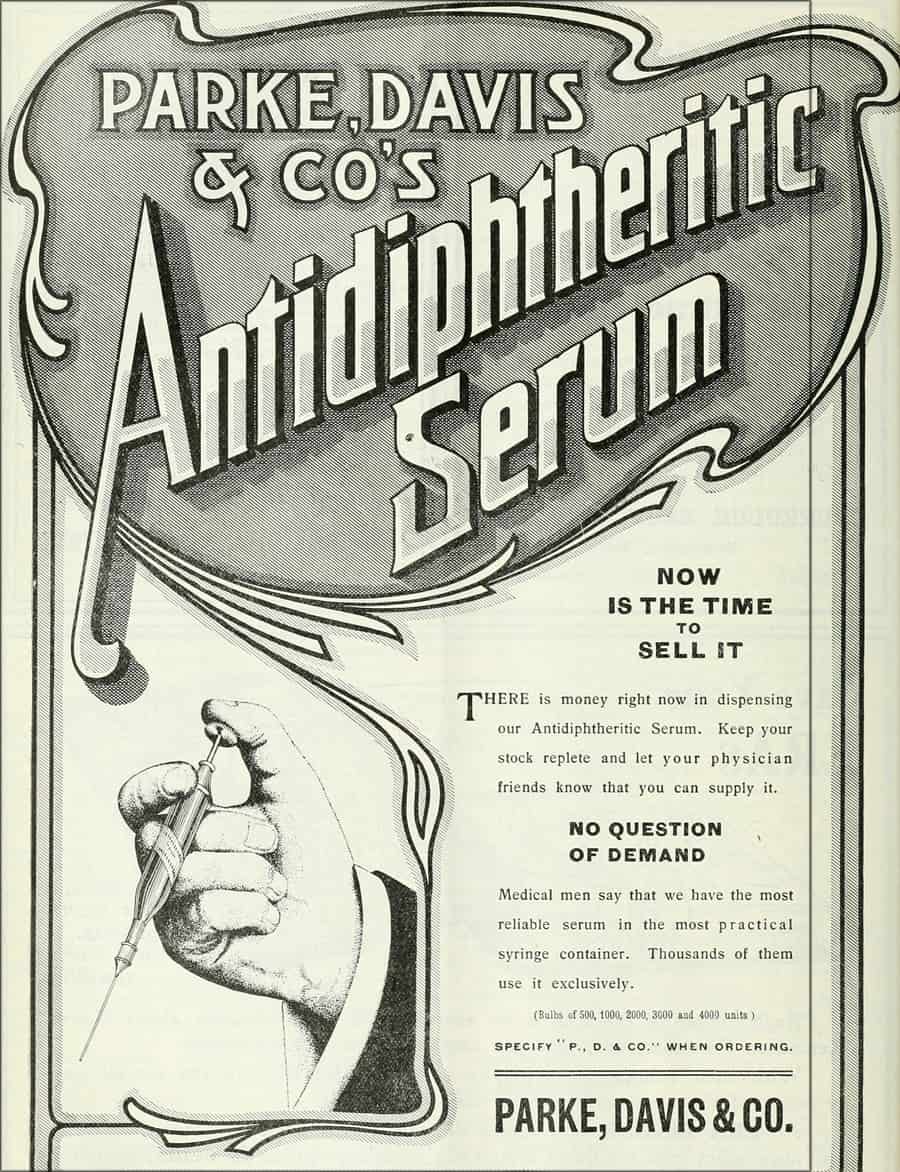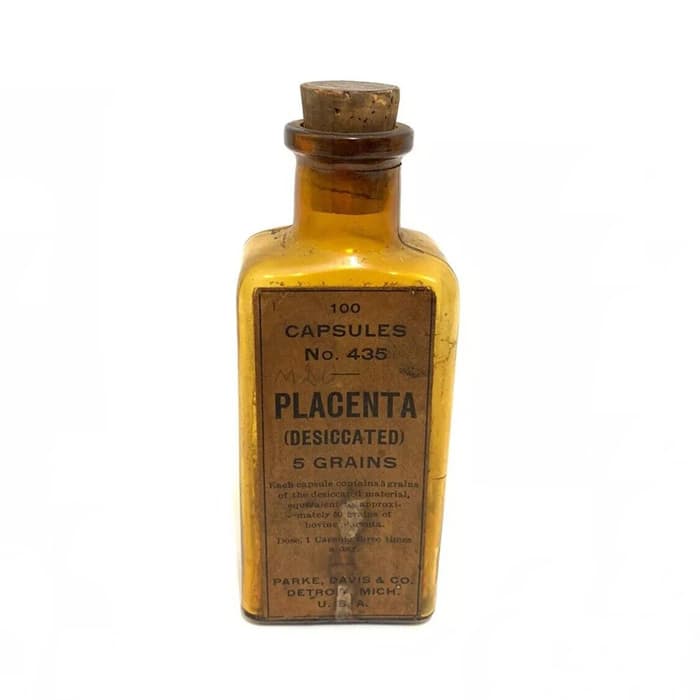Parke Davis & Co Trade Mark (Monogram) Manufacturing Chemists Detroit
Parke Davis & Co
Manufacturing Chemists
Detroit
Trade Mark MEDICAMENTA (Monogram) VERA
Parke, Davis & Co., Detroit, Michigan
Cobalt Blue Druggist Bottle
Provenance: Brian Bingham Collection

This wonderful 16-ounce cobalt blue druggist bottle is embossed “Parke Davis & Co Manufacturing Chemists Detroit” on one side panel of the 7 ¼ inch tall rectangular bottle with beveled corners. The sans serif copy either arches over or under-arches a “PDCo” monogram with the surrounding copy reading “Trade Mark Medicamenta Vera,” set within a bordered circle. All other sides are smooth and would have once displayed a paper label identifying the product. The base is smooth and the lip is a thin disc.

During their time, Parke, Davis & Co. was often referred to as the largest pharmaceutical company in the world. The partnership began just after the Civil War on October 26, 1866, with Dr. Samuel Duffield, a chemist who owned a drugstore on the corner of Gratiot and Woodward avenues in Detroit, Michigan. He began by developing elixirs and ointments in a laboratory behind his store. Realizing that his market was limited, Duffield partnered with Hervey C. Parke, a manager of several businesses in Michigan’s Upper Peninsula who had moved back to Detroit, seeking new opportunities.
Duffield and Parke realized they needed to promote and distribute their products, so in 1867, they partnered with wholesale drug salesman George S. Davis. When Duffield left the company because of poor health and the desire to practice medicine again, the company became Parke, Davis & Company in 1871. They were incorporated in 1875.

The new company’s goal was to manufacture high-quality drugs for new products. They sent botanists worldwide to research healing plants used by indigenous people and to discover new plants that could be used for medicinal purposes. The result was that over 20 years, at least 50 new drugs were developed. Parke-Davis’s notable medical contributions include Adrenalin, Benadryl—the first antihistamine, Chloromycetin, and drugs instrumental in treating epilepsy and tuberculosis.
Parke, Davis & Co. moved their manufacturing operation from downtown to Joseph Campau Street on the Detroit River in 1873. Over many years, buildings were added to the site for administration, plant extraction, rolling pills, and the first industrial laboratory for pharmacological research. The company’s success made pharmaceutical drugs Detroit’s largest industry, behind stove manufacturing.

Parke-Davis led the way in standardizing drug formularies and initiated the concept of quality control. By 1890, the company had opened another manufacturing facility in Walkerville, Ontario, and a branch in London, England. The business also expanded to a farm named Parkdale in Rochester, Michigan, when the riverfront became an unviable location for the horses who produced serums for diphtheria, tetanus, and gangrene. Plants for use in medicines were also grown there.
As the company grew, George Davis was forced to leave in 1896 after drawing on company money to pay off debts. Hervey Parke remained as president until his death on February 8, 1899. George Davis died in 1930.
In 1970, Warner-Lambert bought Parke-Davis, and the merger was completed in 1974. It is now a subsidiary of Pfizer, which acquired Warner-Lambert in 2000.

Primary Image: Parke Davis & Co. Manufacturing Chemists cobalt blue bottle imaged by Alan DeMaison at the FOHBC Reno 2022 National Antique Bottle Convention mobile imaging station.
Support: Reference to the Detroit Historical Society.
Support Image: Choice Botanic Drugs Pressed Herb tins for Chestnut Leaves and Cramp Bark, Parke, Davis, & Co. Detroit, Michigan, Ebay & Esty.
Support Image: Advertisement for Park, Davis & Co. Antidiphtheritic Serum, The Pharmaceutical Era, 1887, Wikimedia Commons
Support Image: Advertisement for Park, Davis & Co. Pepsin Cordial, The Pharmaceutical Era, 1905, Wikimedia Commons
Support Image: Parke, Davis & Co., amber, paper label Elixir Potassium Bromide bottle with stopper, 7 ½ inches tall, Etsy
Support Image: Parke, Davis & Co., amber, paper label Placenta, 100 capsules, No. 435 bottle with cork, 5 ¼ inches tall, Etsy
Support Image: Parke, Davis & Co., Manufacturing Chemists Detroit green bottle, courtesy Rick DeMarsh.
Join the FOHBC: The Virtual Museum is a project of the Federation of Historical Bottle Collectors (FOHBC). To become a member.


















